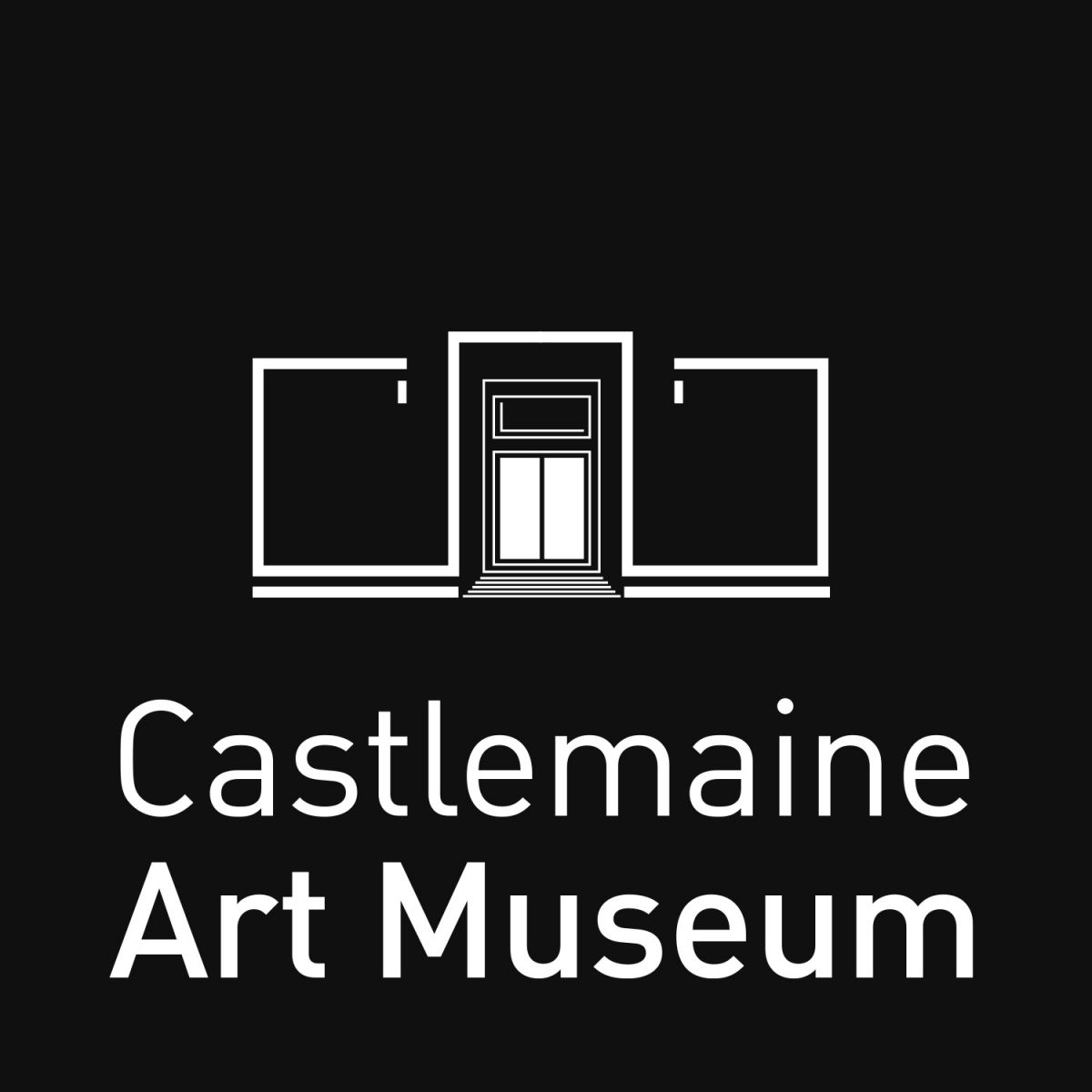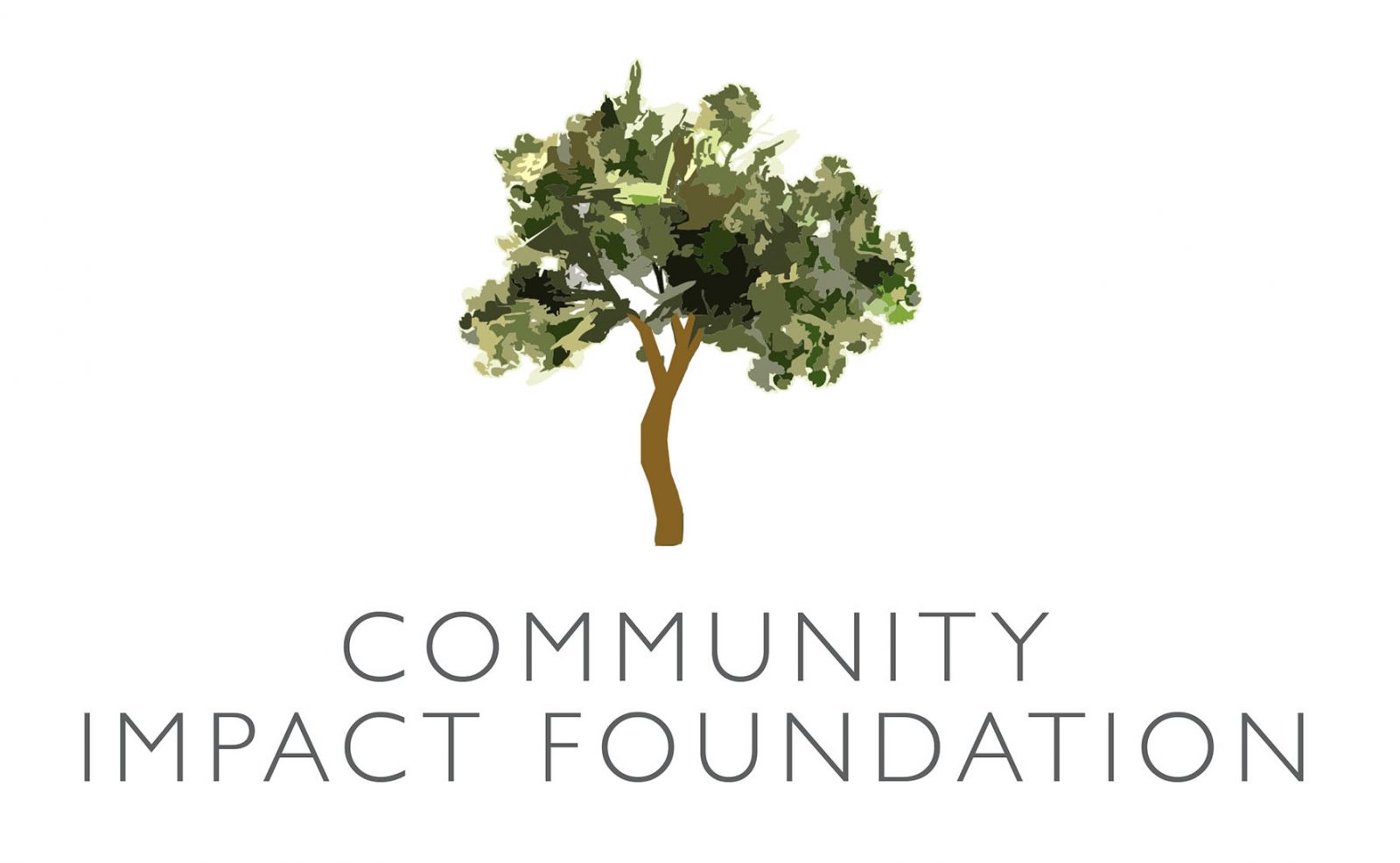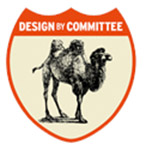
theWay~theWater~theWalk is a river basin simulator, which is part large scale puzzle, part performance in a plumbed landscape. The simulator invites active reflection on the Way of science, Water as subject, and the Walk of research processes.
theWay~theWater~theWalk offers a way of connecting with water and partaking in water management within Australia’s biggest river system – the Murray Darling Basin. Audience members use role cards to walk in the shoes of those who make decisions affecting the health of the river basin ecology, First Nation peoples’ cultures, financial market gain, river basin irrigation farming communities, food supply, tourism, and protected Ramsar sites.
Through intervening in the simulator, participants gain a greater understanding of the characteristics of complex ecological systems, systems management and its mutual accumulated influence on the social-economic, ecological and cultural aspects of the system, and a speculative glimpse of the system’s future.
Over four days at the Castlemaine Art Museum (CAM) in November 2020, we welcomed residents and visitors to test our work to inform its next development phase.
What shapes the health and survival of the system? Can it be kept in balance? If it collapses, then what? Participants find out through the decisions they make and the roles they adopt.
At CAM, there were many systems ‘collapses’ especially when we opened up on-line water trading for an hour each day over the period the simulator was active. Two performers were the “calm, ochre, eucalyptus, freshwater fish” quoted by a resident.
Please read Klare Lanson’s commentary on the work in progress.
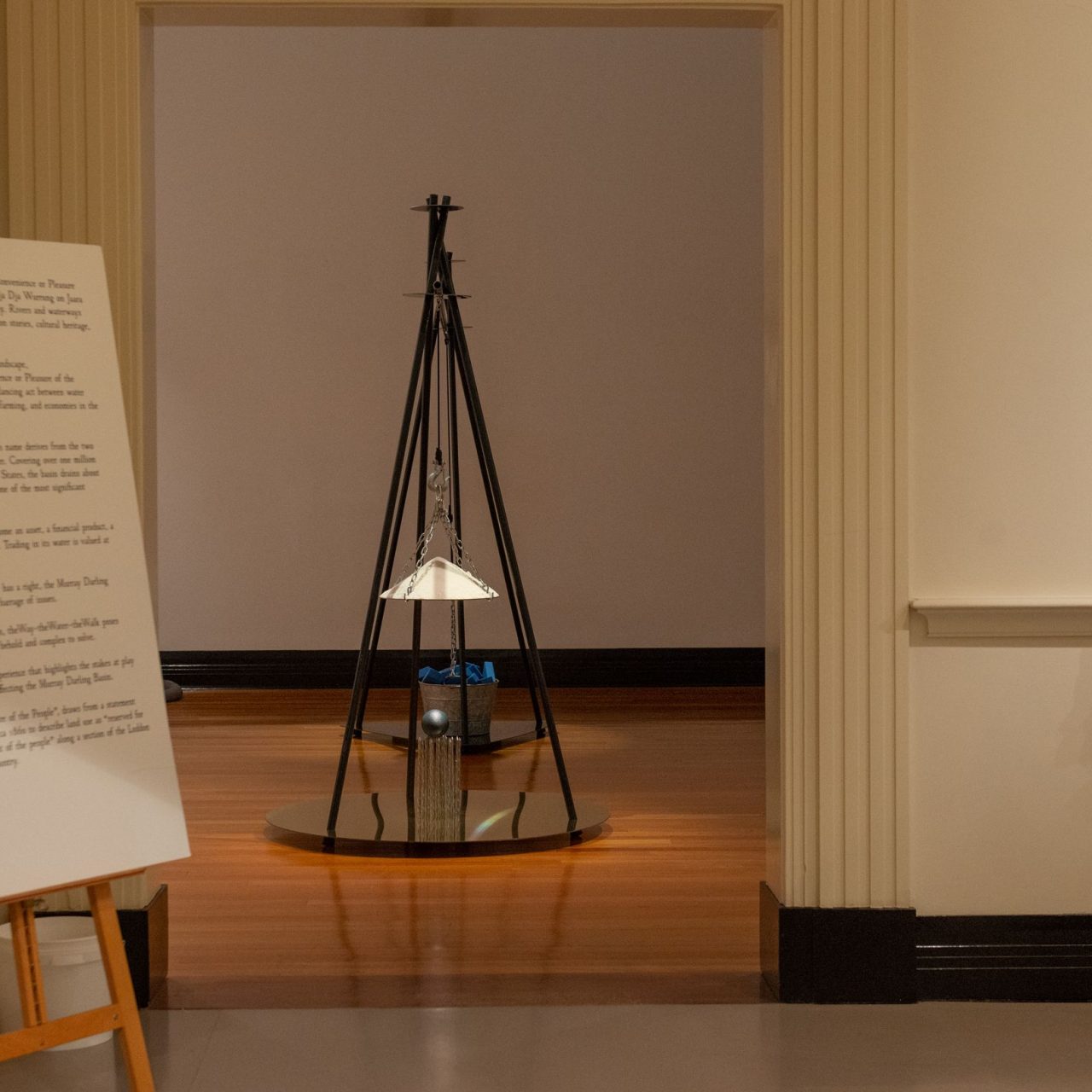
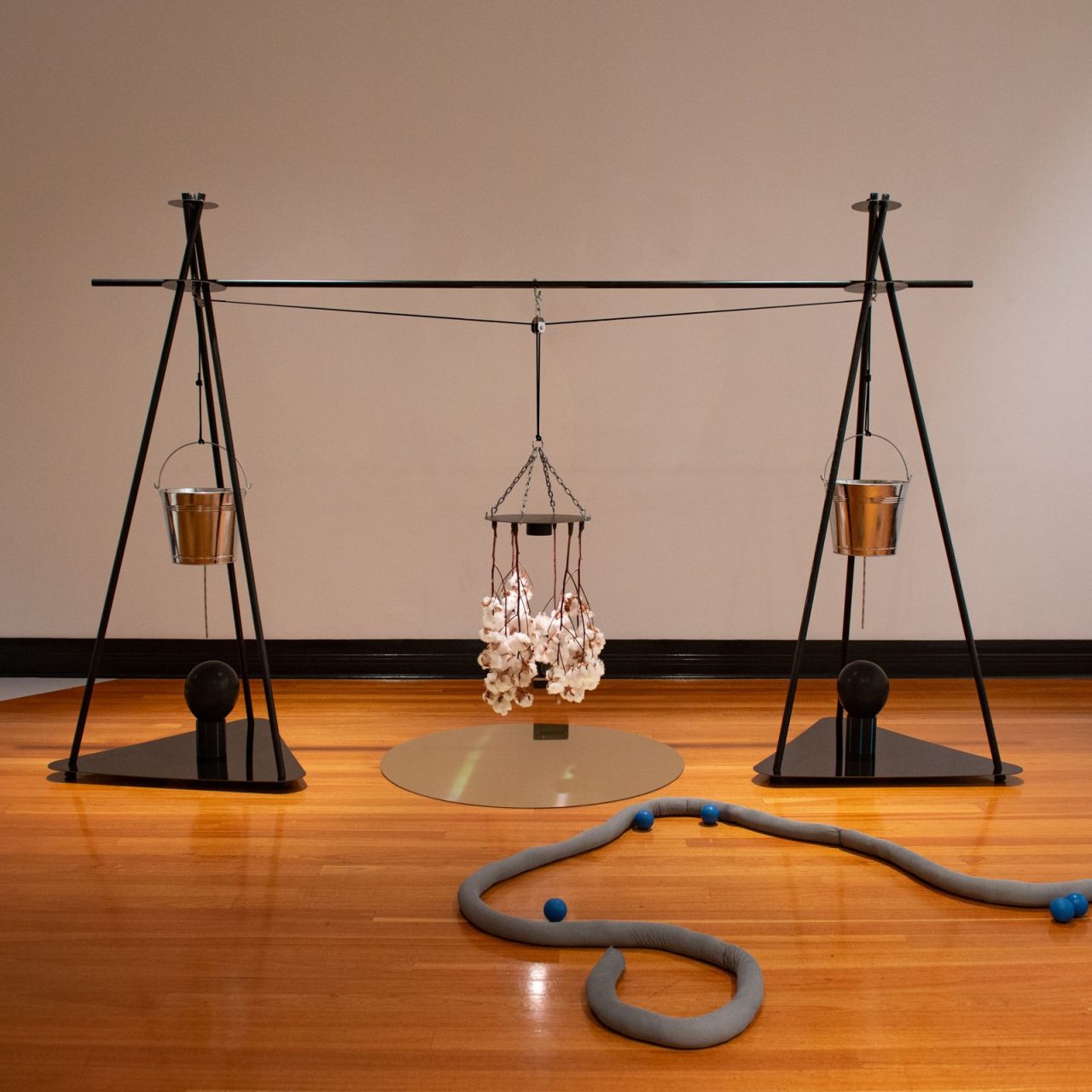
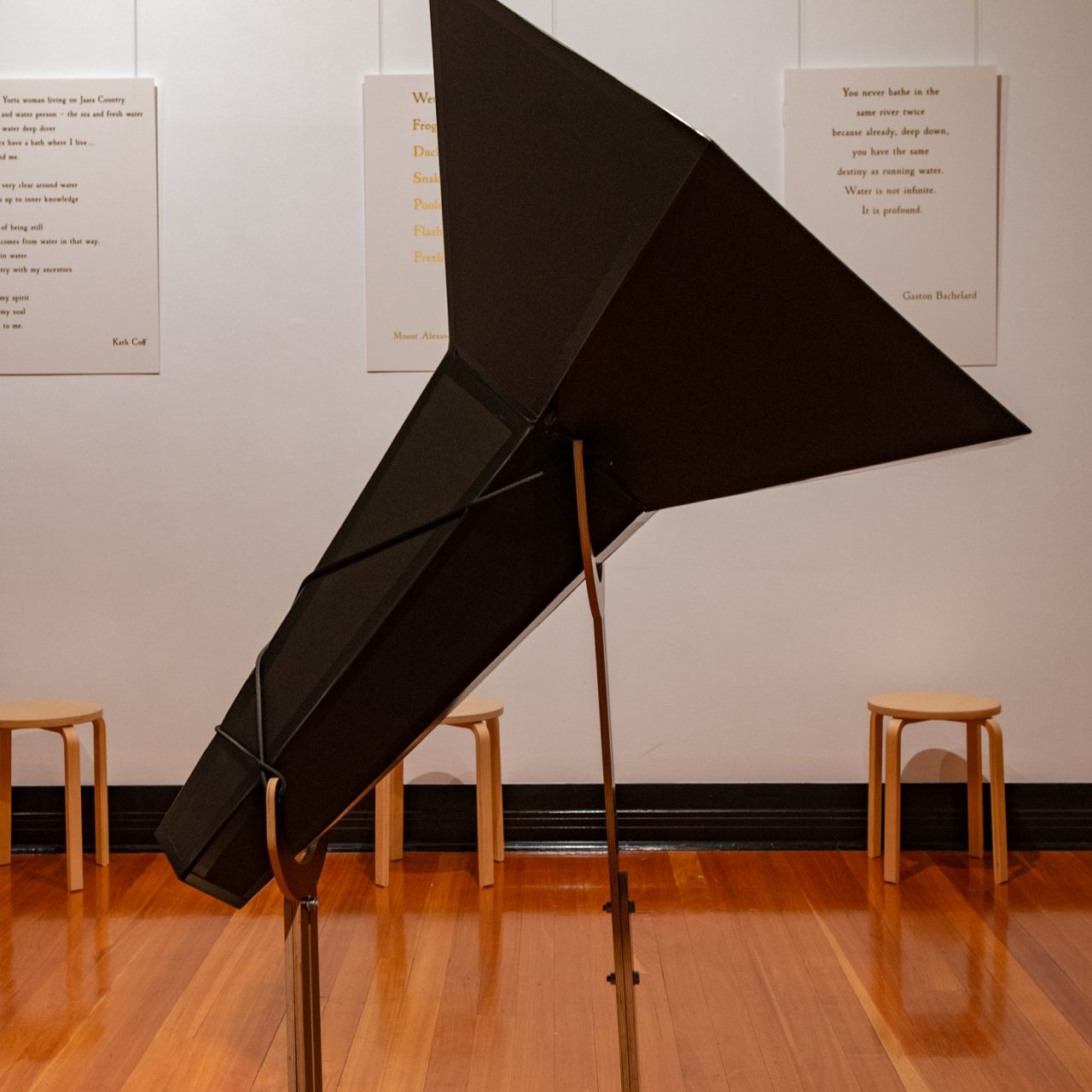
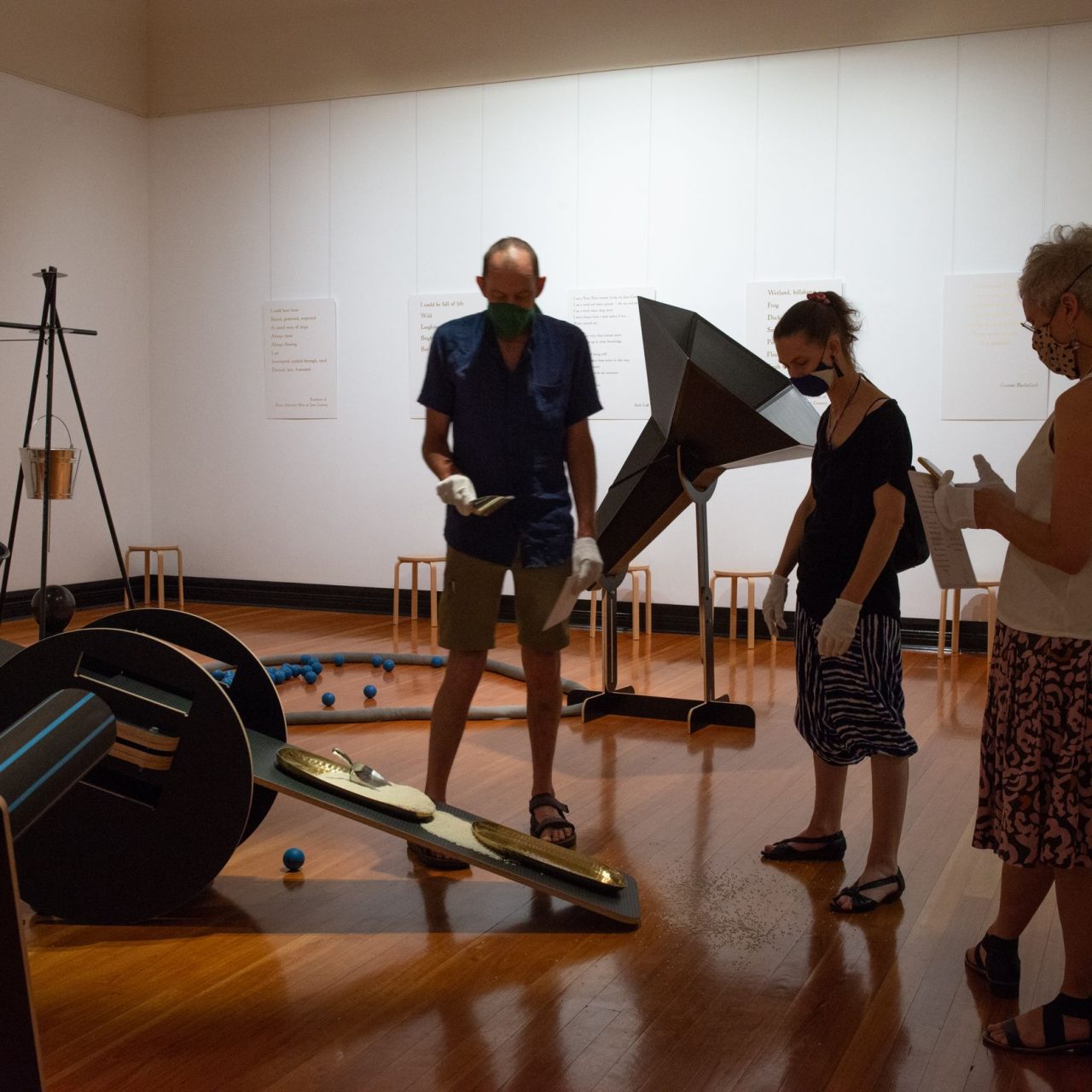
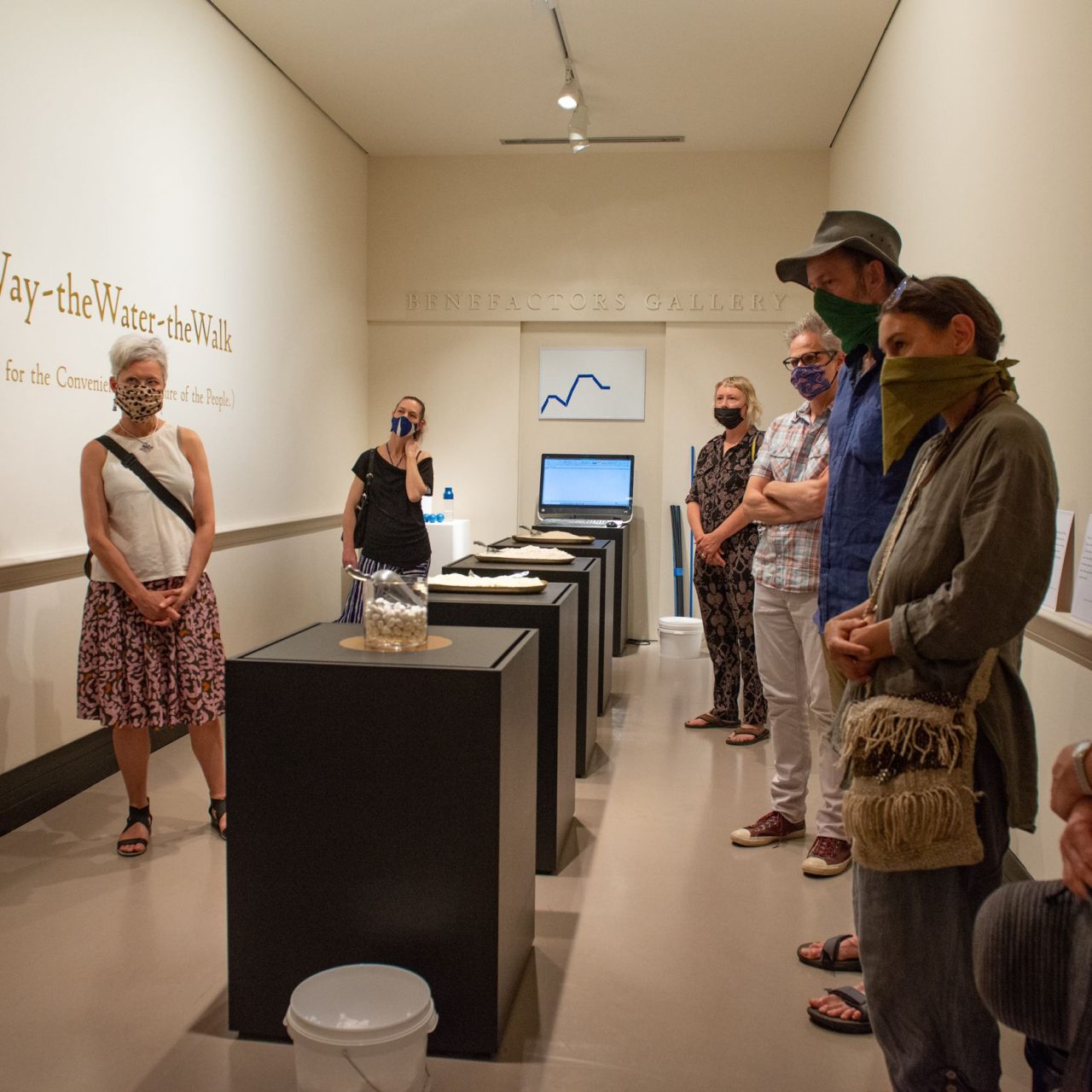
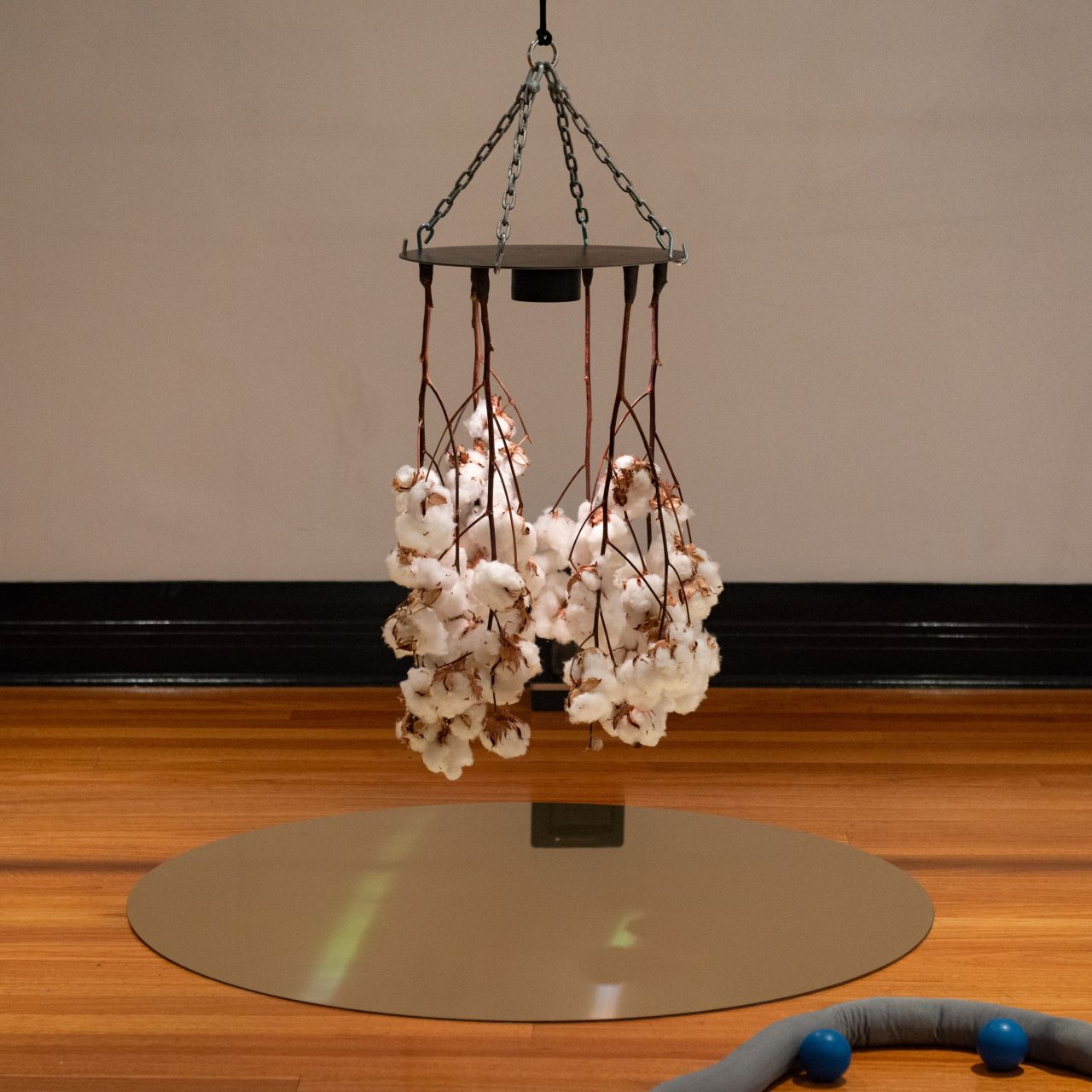
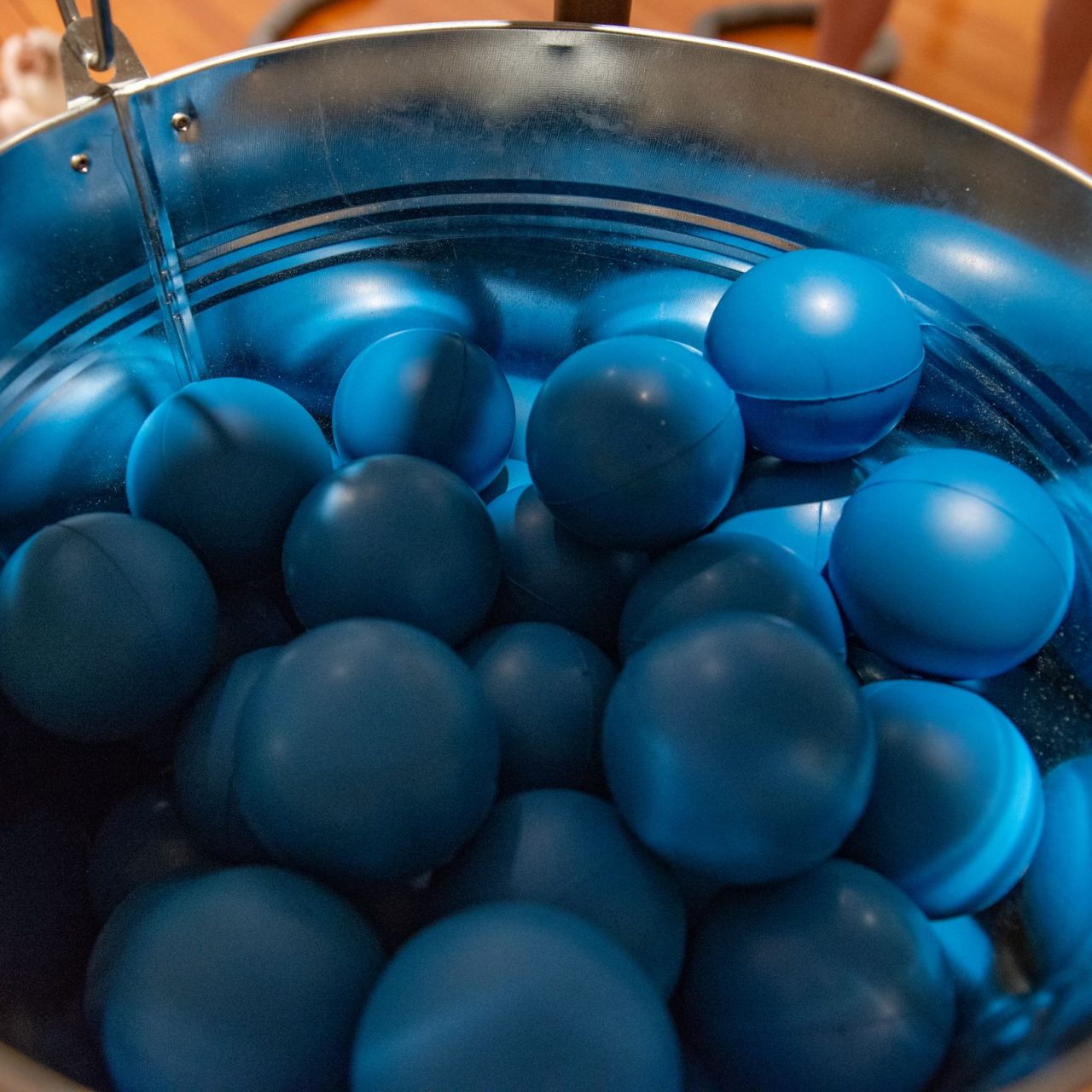
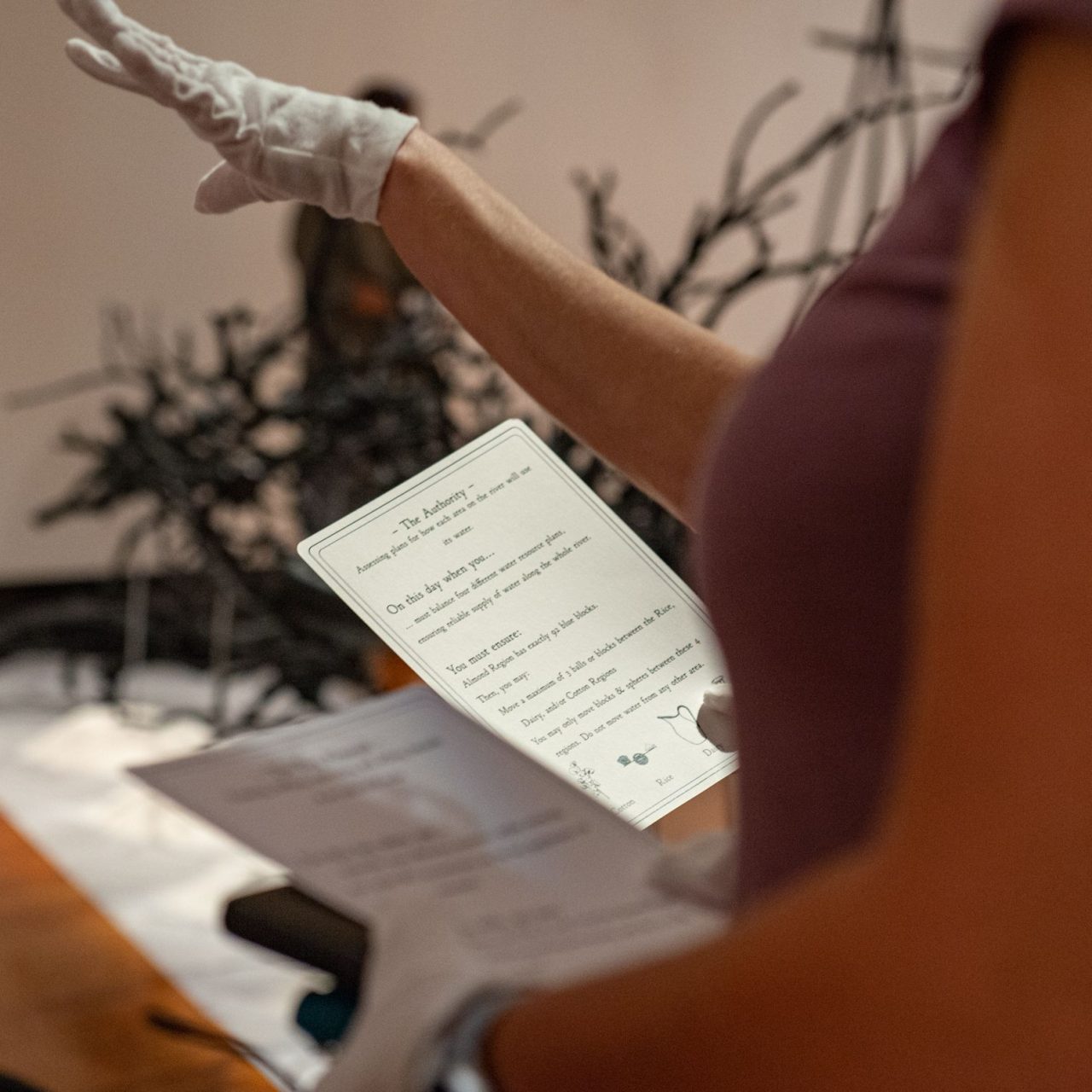
We recorded residents describing their connection to rivers, and field recordings of the river system. These recordings then drifted through the installation.
Blue spheres indicate the ‘upstream’ Darling River region in Queensland and New South Wales, and blue blocks indicate the ‘downstream’ plumbed system of the Murray River in Victoria and South Australia. As water moved through the river basin according to decisions implemented by ‘water systems caretakers’ and those made by audience/participants, two fish sought to move through the basin and survive in the shifting flow.
Information on the greater context of our precious river system was provided in situ, and the even greater cultural context of our rivers and waterways was offered through ‘Dhelkunya Dja’ – the Dja Dja Wurrung Aboriginal Clan’s Country Plan.
“Reserved for the Convenience or Pleasure of the People”, draws from a statement on a Mining Lease and Property map circa 1860 to describe land use as “reserved for the convenience, recreation or amusement of the people” along a section of the Loddon River – a tributary of the Murray River – at Vaughan Springs on Djaara Country.
We subsequently presented this work online as an Alternative Design Session in the inaugural global Sustainability, Research and Innovation Congress in June 2021 (SRI2021) and as an online workshop at Performance Studies International (PSi) in 2022.
Concept and direction: Jude Anderson
Design and construction: Morwenna Schenck
Performers: Briega Young, Josiah Lulham
Sound design: Jacques Soddell
Participation and online simulator design: Georgia Symons
Water systems workers: Jude Anderson, Morwenna Schenck, Anna Schwartz, Georgia Symons
Documentation: Ideas Agency and Diana Domonkos
Punctum General Management: Steve Mayhew
With contributions from residents and First Nation members of Nalderun, Emeritus Professor Nordin Hasan, Dr. Jazmin Llana, Matt Cornell and generously supported by Claire Eliza – Pool of Dreams and the Australia Council’s Fellowship program.
